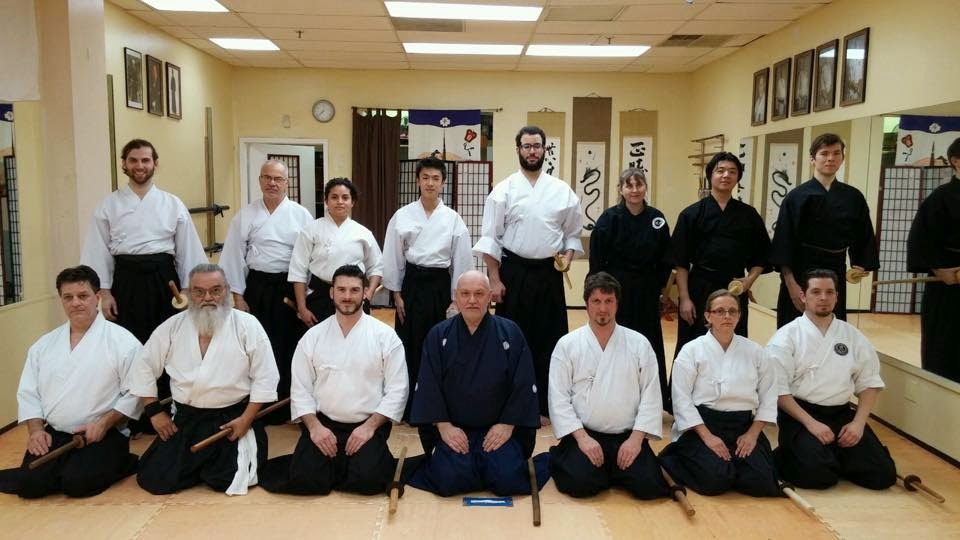Carl Long sensei's seminar out at the Masakatsukan Dojo
I always like to encourage my senior guys to experience other styles as well. When I heard Carl Long sensei was teaching a seminar in NYC, I made sure Zach and Charles was able to go. Thank you Carl Long sensei, Matt Ubertini and Erik Johnstone sensei for letting my guys participate and for having me at the dinner. Here are some thoughts of the seminar from Charles.....
At the seminar at Masakatsukan Dojo in January, we studied Muso Jikiden Eishin-Ryu, a "koryu bujutsu," or traditional Japanese martial art, with a direct lineage stretching back more 450 years. Specifically, we studied Dai Nihon Batto Ho (also known as Dai Nippon Batto Ho), a set of "waza" or techniques developed for cadets at Japan's Naval Academy that was incorporated into Muso Jikiden Eishin-Ryu. Its origins in the Japanese military in a way makes it a cousin to Toyama-ryu Battodo, which was developed for the Japanese army.
There are lots of minor differences between Dai Nihon Batto Ho and Toyama-ryu kata. The toes start and end up pointed in different directions; seigan is held at a different height; chiburi is held at a different angle; and so on. However, much else remains the same, and in many ways, learning Dai Nihon Batto Ho was like learning a new set of Toyama-ryu kata. As such, what I think I got most out of this part of seminar had to do with "kihon," or fundamentals, taught excellently by Carl Long sensei.
One principle I liked was the idea that every cut should be preceded by a thrust and that every thrust should be preceded by a cut. Even if this is not literally true in a fight or in kata, that feeling should be there — that any and every move should be readying for an attack. This feeling can help greatly strengthen transitions, and could help one shift in the middle of an attack from one kind of attack to another if conditions change unexpectedly.
Along the same lines, during transitions, one should keep the sword's edge pointed at the target one is looking at until one shifts weight enough to handle another target. This helps maintain a necessary sense of threat.
Another major principle was that one should move as if they are not giving up territory. If one has gained ground on an enemy, one should keep it, and keep pushing at the enemy until they weaken enough for you to cut them down; take and control the opponent's center. Now of course, there are times when one can give up territory, but one should only do so as a way of taking more territory.
Intriguingly, we also learned differences in how separate branches of Muso Jikiden Eishin-Ryu practiced waza. One had more aggressive postures, while the other was more defensive. This lead to differences in whether one kept one side of the hip leaning forward or not, and how quickly one transitioned to a follow-up cut. It is important to adjust one's technique to what one's opponent is doing, and it was nice to think about different options. This reminded me of the kinds of differences sometimes seen between Toyama-ryu and Nakamura-ryu.
A final principle the seminar reinforced was how power should often go upward right before cuts. I'm used to thinking about rooting down to ground myself and better use my hips, but ultimately the sword has to go upward and outward to ensure a big cut. Thinking about the energy going upward also helps keep one light on one's feet, for greater speed and adaptability.
All in all, it was a great seminar. A great deal of thanks to senseis Long, Ubertini and Johnstone for their instruction!


Comments